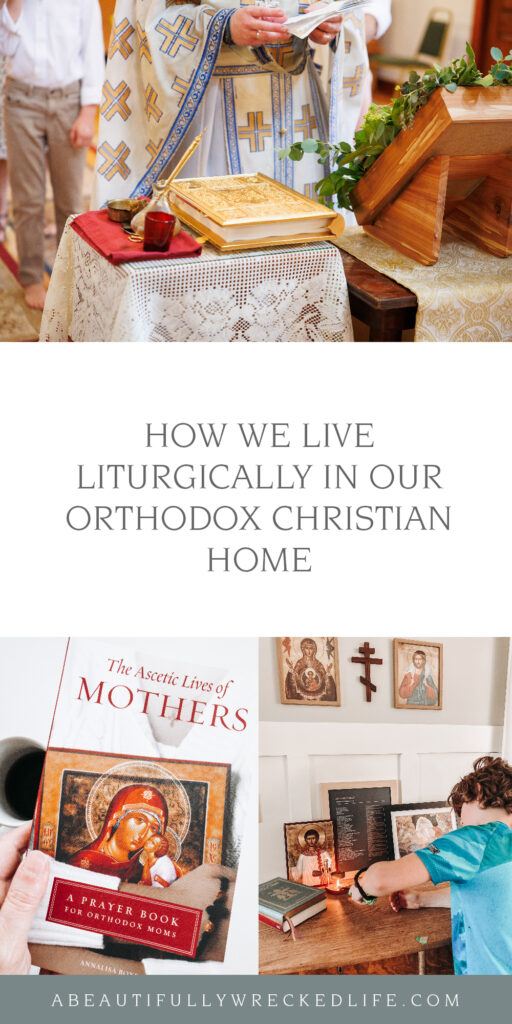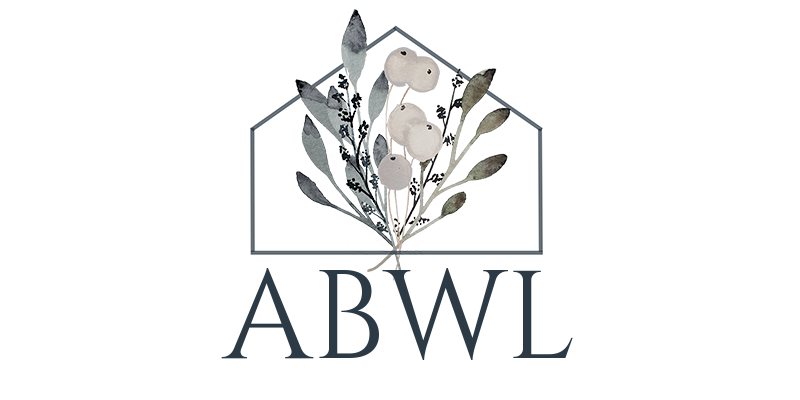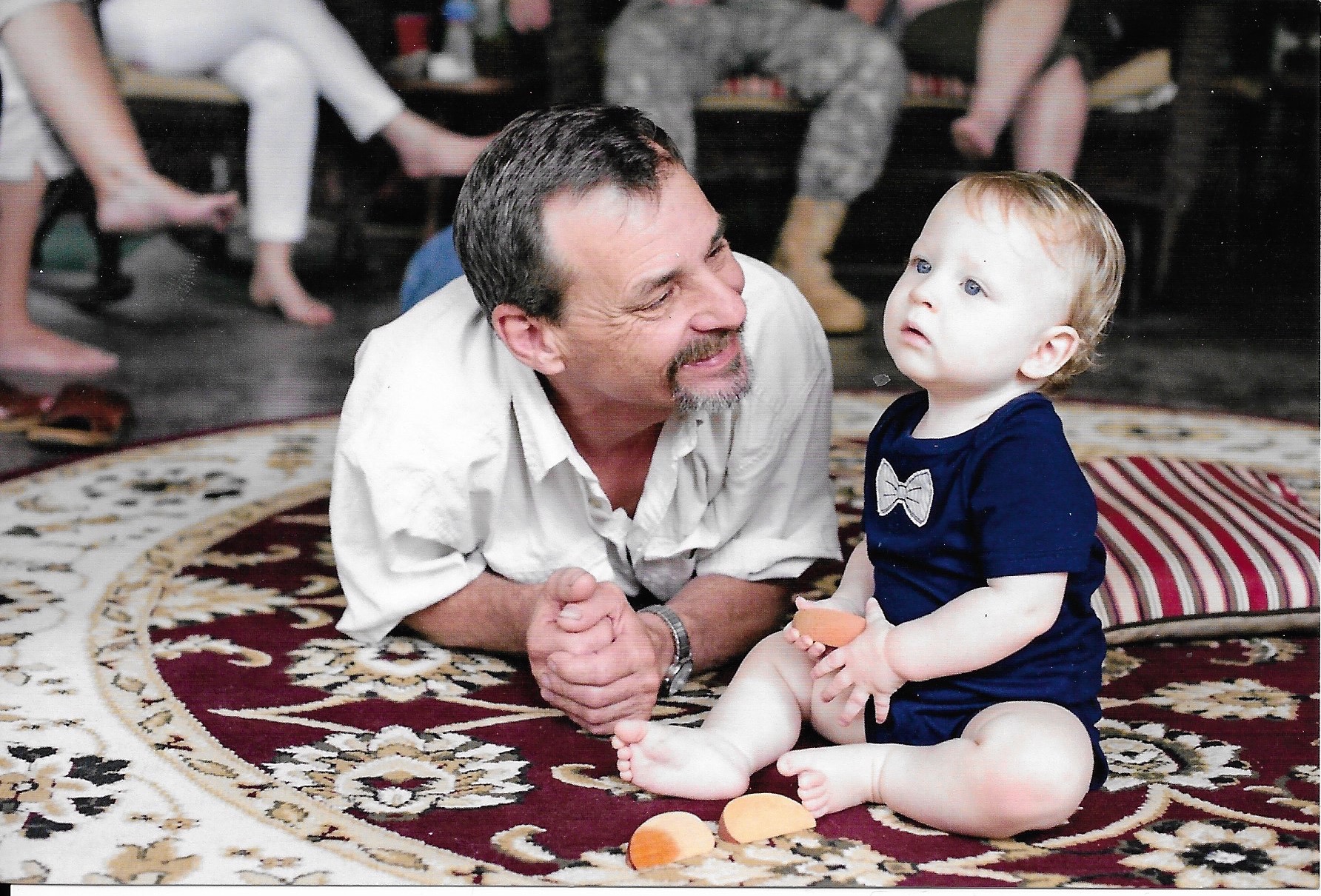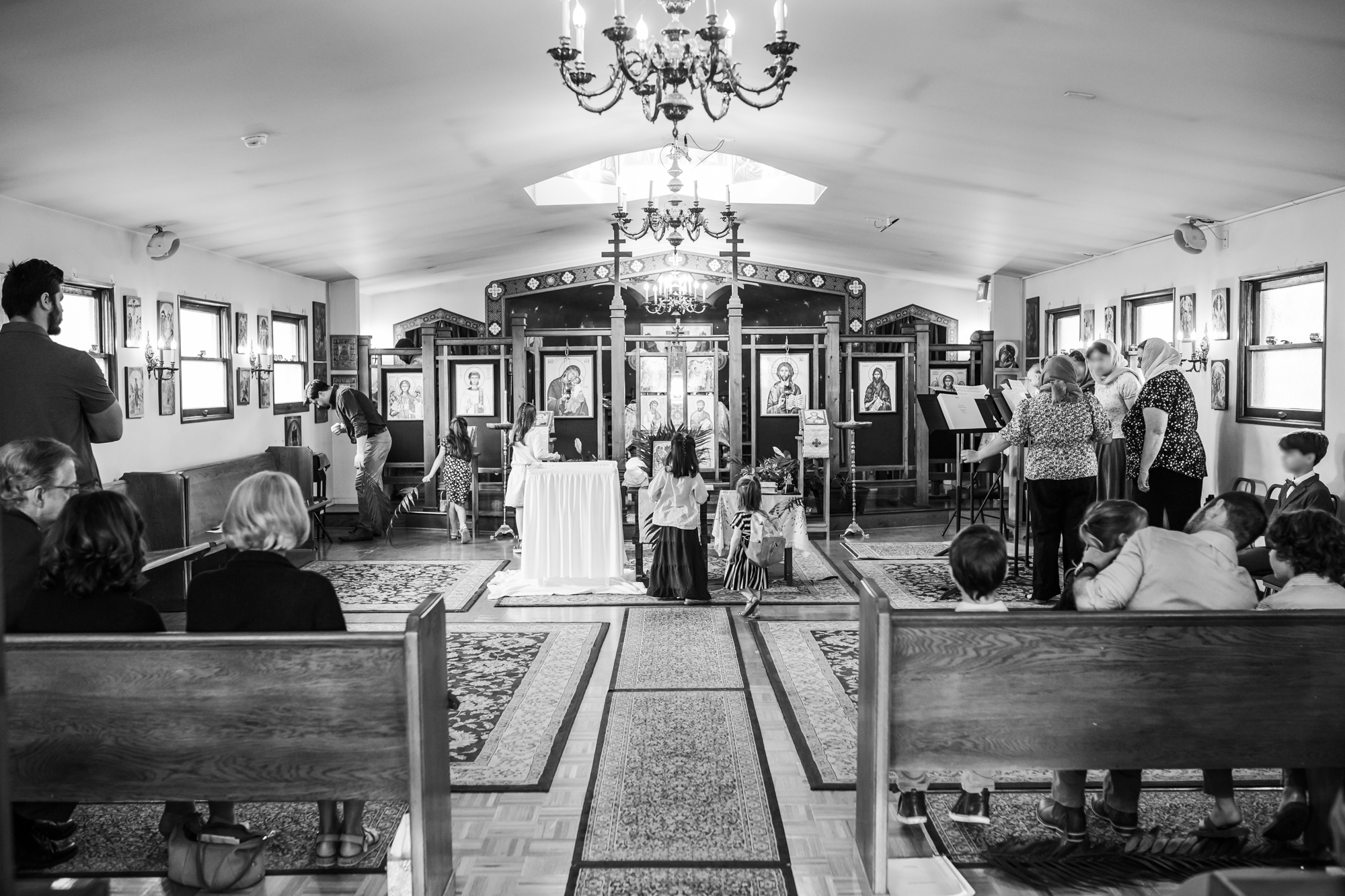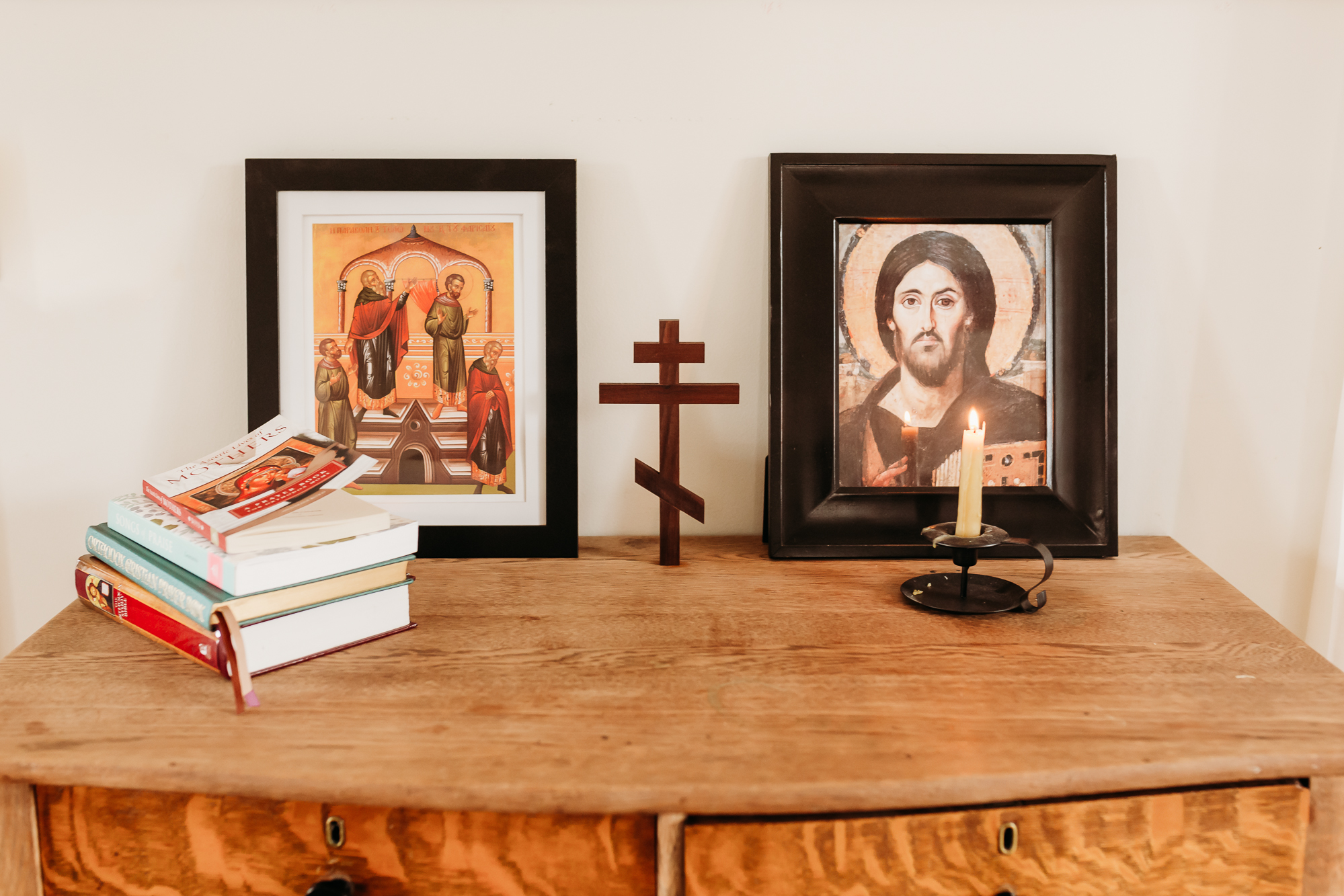let's be social!
Prior to becoming Eastern Orthodox, I had never been a part of a high-church tradition that followed the liturgical calendar, so this was all new to me. However, living liturgically was something I was drawn to even before we stepped foot inside an Orthodox Church. Discipleship has always been a huge part of our home and family life, but I loved the practice of centering the calendar year on Christ’s life and ministry. I also love that Orthodox Christians are called to make their homes into “little churches” where we live out of our faith and prayer life each day.
Admittedly, there are some aspects of Orthodoxy that have felt pretty overwhelming to me, but I love that the Orthodox Church isn’t legalistic about doing all the things. It has given us the freedom to add elements of the liturgical life to our home as we’ve been able, which has not only taken out the overwhelm, but also made it a lot more sustainable than trying to do everything at once.
SO HOW DO WE LIVE LITURGICALLY IN OUR EASTERN ORTHODOX HOME?
SETTING UP (& USING) A PRAYER CORNER
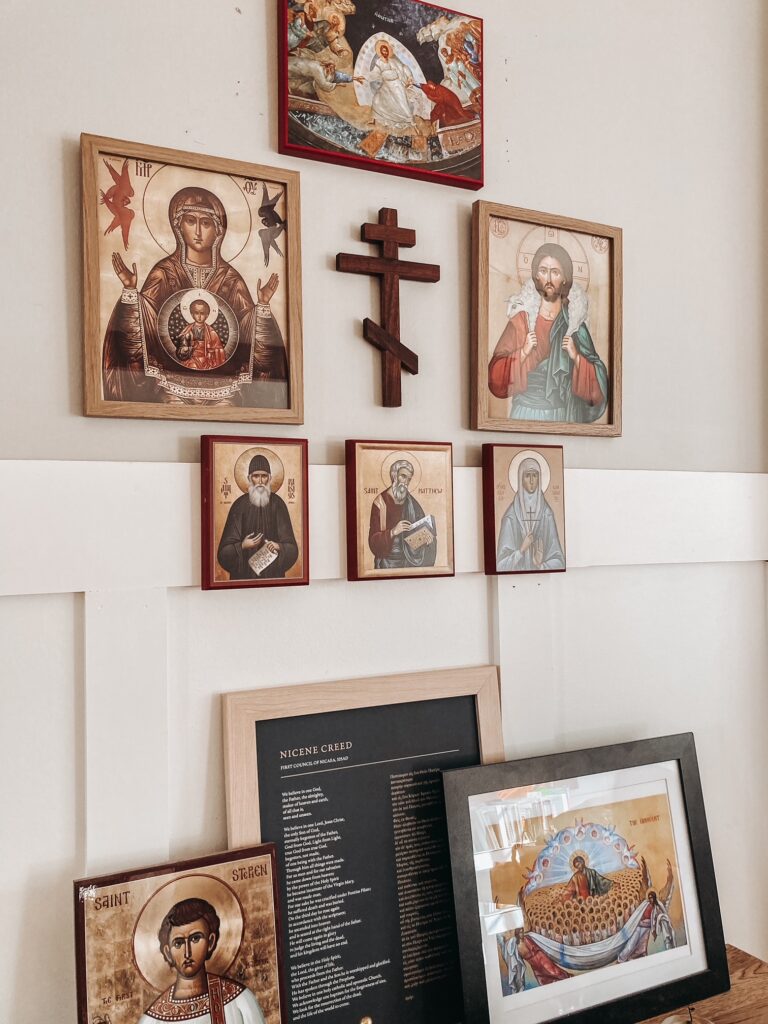
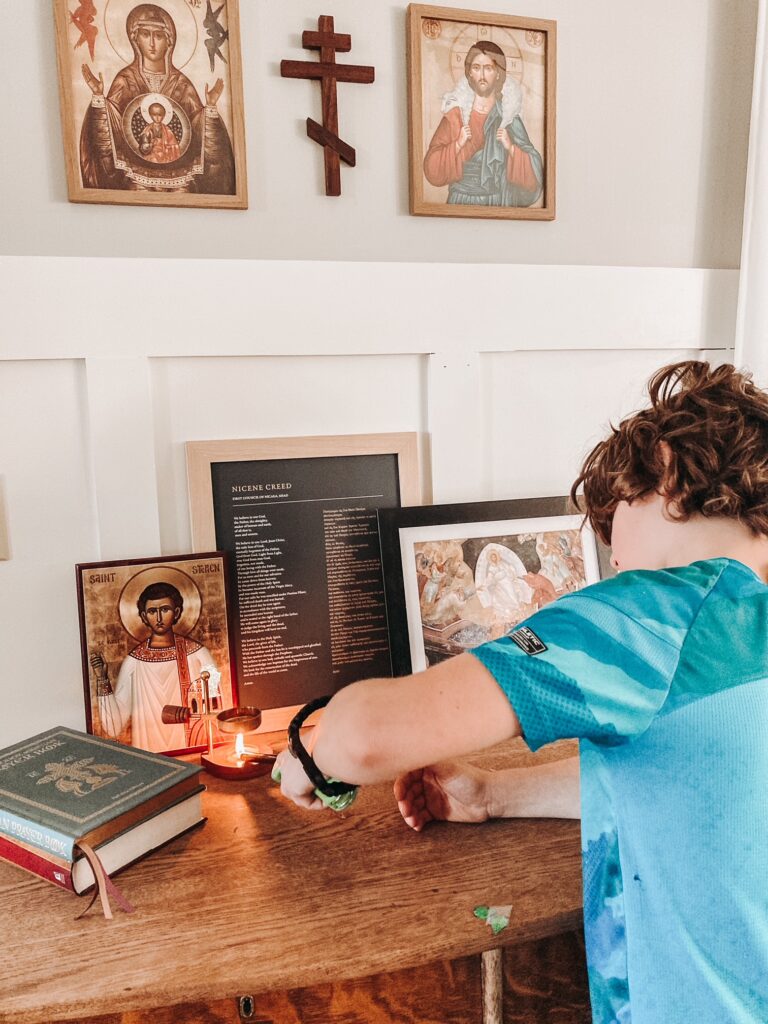
A distinctive feature of many Orthodox Christian homes is that somewhere in the house (often centrally located, but not always), you can find a prayer corner (also called an icon corner). The prayer corner helps us live liturgically because it’s a tiny reflection of church and includes elements, such as colorful cloths and icons, that we can change out seasonally to match the liturgical calendar.
This a great place to say that the whole idea of icons and their use in Eastern Orthodoxy was really foreign and strange to me at first. Whenever people at church explained it to us, I heard the logic of what they were saying, but it still felt really weird and fairly uncomfortable to have icons everywhere. It took several months before I finally understood and accepted their role (although like everything in Orthodoxy, I’m really only at the beginning of understanding and I expect it to continue to deepen over time).
My favorite explanation, for those of you who are curious, is that icons are like a family photo album. We hang pictures of our loved ones, both the living and the dead, in our homes because they mean something to us and it helps us remember them. Icons serve a similar purpose (there is, of course, a whole theology that I’m not going into here). Having icons of Christ, Mary, and other special saints hanging up reminds us that “we are surrounded by so great a cloud of witnesses,” so we should “lay aside every weight, and sin which clings so closely, and…run with endurance the race that is set before us, looking to Jesus, the founder and perfecter of our faith, who for the joy that was set before him endured the cross, despising the shame, and is seated at the right hand of the throne of God.” (Hebrews 12.1-2)
Icons aside, the other rather foreign thing to me about the prayer corner was the idea of standing there to say my prayers each day. As a low-church Evangelical, I had never had a set place for prayer in my house. I usually prayed in my arm chair with my coffee in the mornings and in my bed before I went to sleep at night. Nothing formal.
Once we had a very small prayer corner set up in our home, it was super awkward to stand there for prayer. I didn’t like praying right in the middle of the living room and I didn’t like praying standing up. But I could totally see the value of having a place in our home dedicated to prayer, just like we have a place dedicated for cooking, eating, sleeping, etc. Just like entering a church puts you in a mindset to worship, having an established area for prayer puts you in a mindset to converse with God.
Eventually, I got used to it and now I love having our prayer corner (ours isn’t in an actual corner) right in the middle of the living room. I see Christ’s icon from most of the downstairs living area, which keeps Him on my mind and reminds me to pray throughout the day.
(Quick disclaimer for my Evangelical friends and readers – as an Orthodox Christian, I still pray in my armchair in the mornings and in my bed before I go to sleep, etc. Many of those habits and routines haven’t changed because we aren’t limited to praying at our prayer corner. It’s just really is helpful to have a physical place set aside for prayer.)
PRAYING TOGETHER AS A FAMILY
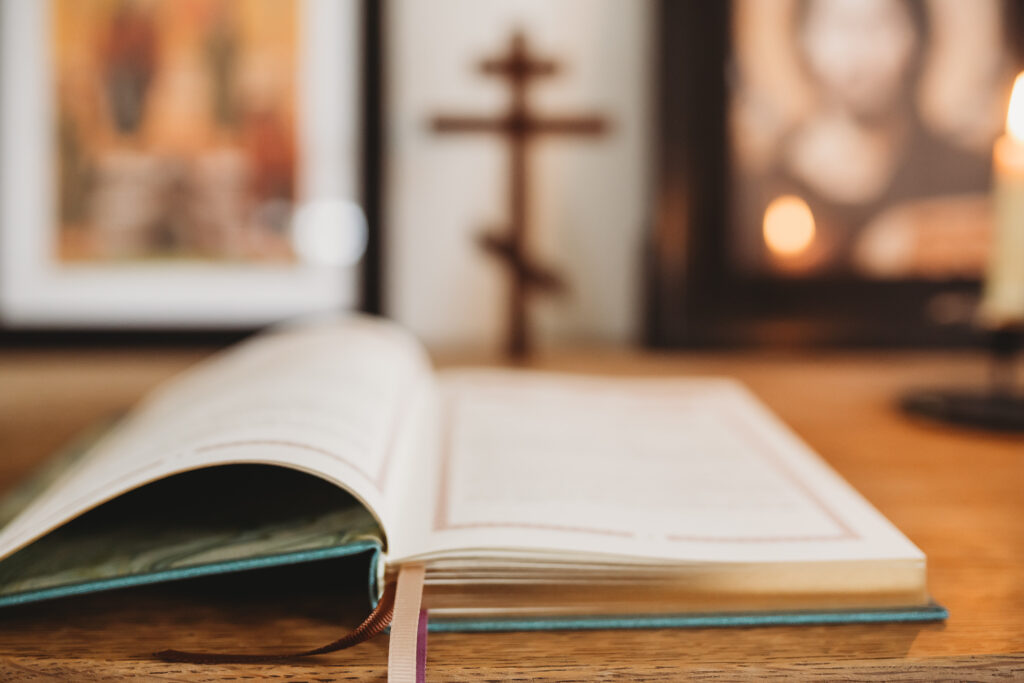
Praying together as a family wasn’t a new habit that started as we became Orthodox and started living liturgically – that was something we had always done together. What was new, however, was praying from our prayer books.
As a former low-church Evangelical, another thing I always scoffed at was the idea of praying from a prayer book. How could written prayers communicate all of the things that were on my heart? How could they express my needs? Wouldn’t they stifle the Holy Spirit?
Shockingly, I found the opposite to be true!
First, there are prayers written for SO MANY needs already, so I haven’t really found anything I need to pray for that isn’t covered by the written prayers in some way. Second, the written prayers serve as a springboard for my own spontaneous prayers. Often, as I pray the words written by saints who’ve gone before me, they bring to mind more specific things I want to pray for and help me structure my prayers so that I’m not just rambling. Finally, there’s the Jesus Prayer, which is pretty much all-encompassing. When I don’t know what to pray for someone, I can pray the Jesus Prayer for them, and because God knows our needs far better than we do, I don’t have to scramble for the “right” words to pray.
The other thing I love about using prayer books is that it teaches the kids how to pray, too. The prayers are familiar to them now and give them the words to pray when they don’t know exactly what to say. Again, God knows our hearts and needs even better than we do, and we’ve seen a lot of fruit from the kids being able to choose the prayers they want to say and then have the structure to pray them, knowing that God already knows.
The other thing I love is that because the Trisagion Prayers are the same almost all of the time and we always start with those, the kids know them by heart now. One of the things we’ve done is given them ownership over our family prayer times. The kids each have a job to do, whether it’s lighting the censer and candle, leading the prayers, or offering the Cross to venerate. They get to actively participate in our family prayer time, which is a beautiful thing!
FASTING (& FEASTING) ACCORDING TO THE LITURGICAL CALENDAR
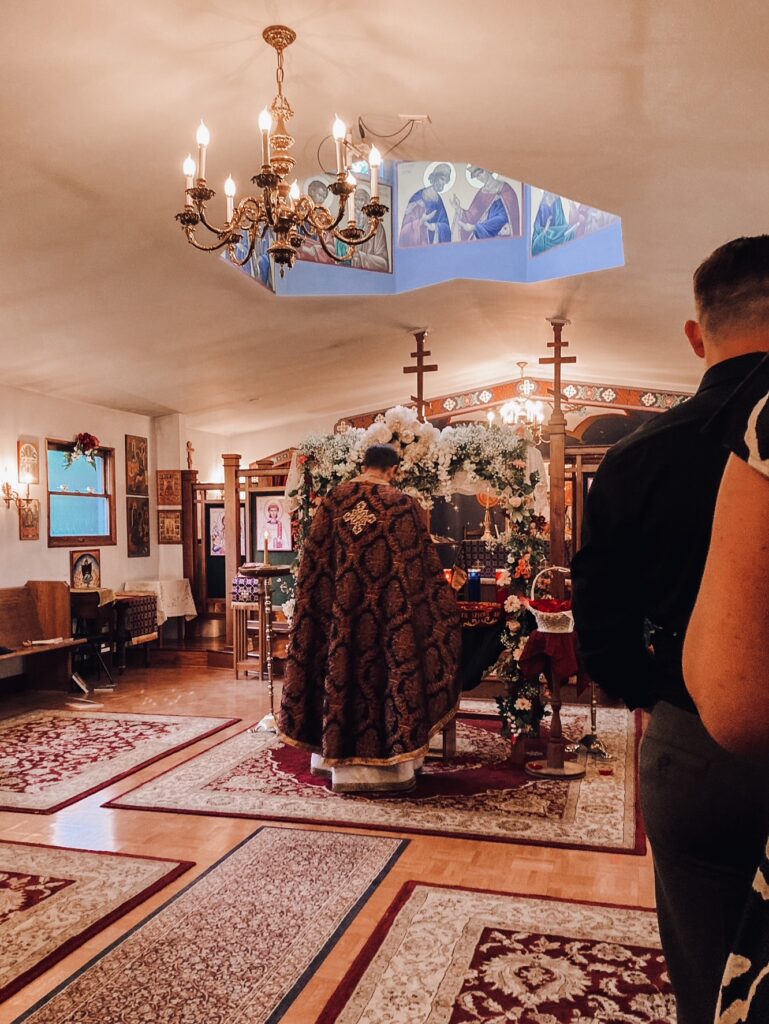
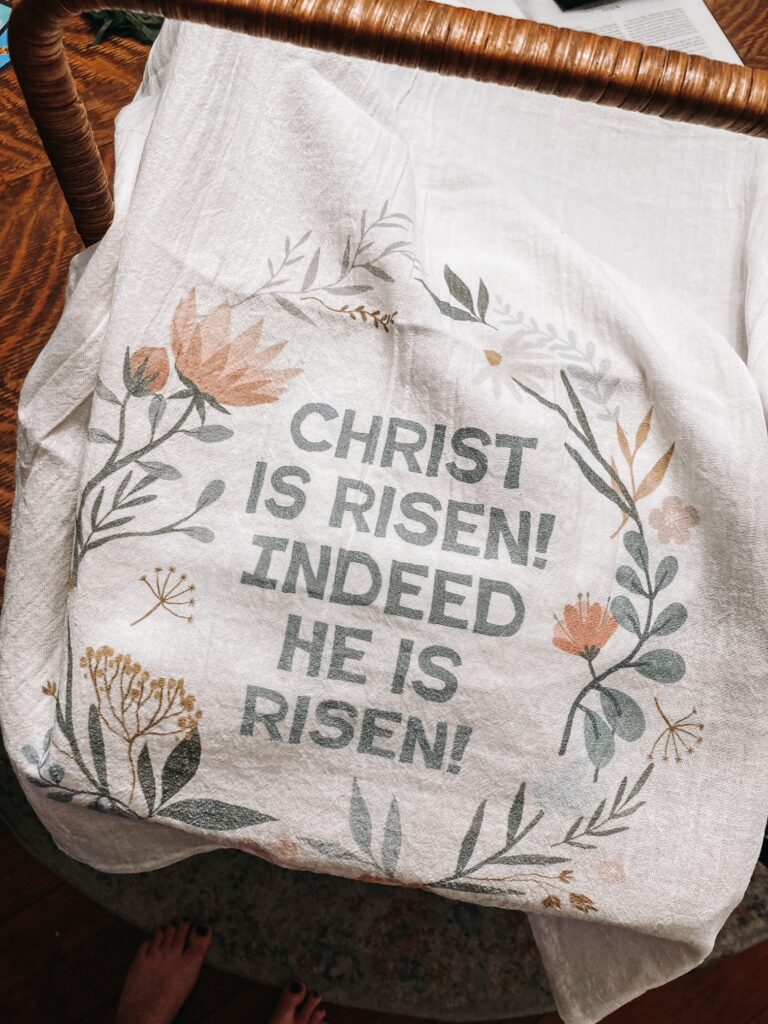
Orthodoxy gives a lot of tools to deepen our spiritual walk, and one of them is fasting. It’s a regular part of the Orthodox life, and it’s really encouraging because Orthodox Christians worldwide participate in the fasts (and feasts) together.
Fasting, however, is one of the areas that has felt super overwhelming to me. Part of that is just because meal planning in general is something I despise, so to have to meal plan for a vegetarian or vegan diet feels especially daunting. I’ve struggled to find enough recipes, especially ones my kids will eat, to fill the longer fasting periods (Nativity and Lent). I do have a pretty solid plan for the upcoming Nativity Fast (which starts on November 15th), and I’m hoping to take that plan and refine it for Lent.
However, the goal isn’t to be legalistic about it. The goal is to participate as fully as we’re able and then allow God to work through our incredibly meager offerings. What I love is that no matter how imperfectly we do it, it helps us be intentional about removing excesses from our life, eating more simply (even if we can’t strictly follow a vegan diet), and spending more time in prayer.
And the beauty is that for each period of fasting, there’s also a period of feasting! The liturgical life is all about the rhythm of recognizing our sin and need to repent, as well as celebrating the joy and hope we have in Christ. The periods of fasting and feasting help us live in that rhythmic way so there’s a healthy balance between asceticism and indulgence.
CELEBRATING NAME DAYS & OTHER SPECIAL FEAST DAYS
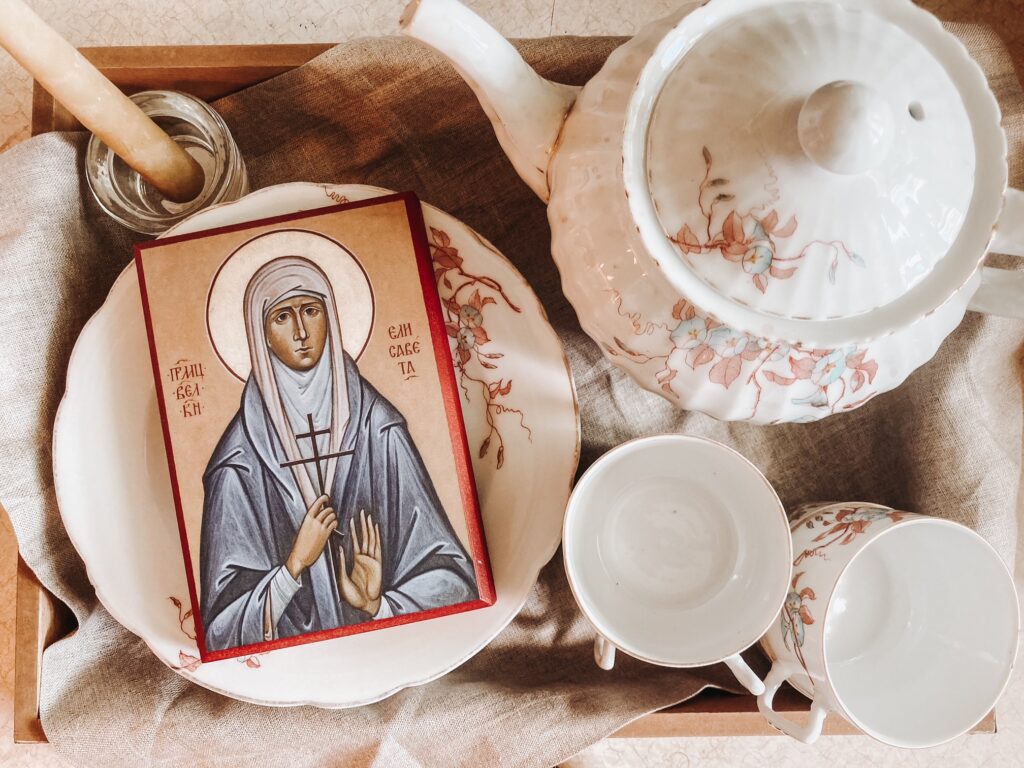
There are 12 Great Feasts in the Orthodox Church (not counting Easter), along with many other days which honor saints who are special to us. The Great Feasts largely focus on Christ’s life, (although some of them honor Mary, too), and these are opportunities for us to read the Gospel accounts and to remember what Christ accomplished. Having those feast days scattered throughout the year keeps us focused on His life and ministry.
There are also Name Days, which are the feast days of our patron saints. For example, my daughter’s patron saint is Saint Elizabeth the New Martyr and her feast day is celebrated in July. So on that day, we read the story of St. Elizabeth’s martyrdom, sing Many Years to my daughter, and have a special treat. It’s almost celebrated like a birthday, and in some countries a person’s Name Day is actually a bigger celebration than their birthday. Since we’re so new to Orthodoxy, though, our celebrations are pretty modest, but we’ve enjoyed getting to know our saints better (which is a sentence I never expected to utter).
SOME OF MY FAVORITE RESOURCES TO HELP US LIVE LITURGICALLY
When we first started attending the Orthodox Church and trying to bring some liturgical elements into our home, I was super overwhelmed. There are so many opportunities and ways to celebrate the different feasts that it was hard to know where to start. Thankfully, there are also some incredible helpful resources out there for people like me who are brand new to living liturgically!
The Ascetic Life of Mothers. I LOVE this prayer book, because it not only includes the daily Trisagion Prayers and some other common prayers, but it also includes a number of prayers specific to parenting and family life. There’s also a whole section to prayerfully prepare both myself and my children for confession, and a section of prayers for my kids’ futures. We have a couple of different prayer books, but I find that I use this one most of the time.
Ascetic Life of Motherhood Blog & Monthly Liturgical Printables. I found Khouria Destinie on Instagram last year soon after we started attending our church, and I LOVE that she makes Orthodoxy – especially Orthodoxy for families – so accessible! Her monthly printables are a huge blessing, because they give me just a handful of things to focus on for the month and teach us about traditions in the Church I wouldn’t have known about otherwise.
Parousia Press. Their whole entire website is rich with resources, plus they sell some beautiful and really helpful liturgical planners. I’m VERY excited about the 2025 Little Church Planner. Aside from their store, though, they have a wealth of well-organized posts with lists of additional resources for each major feast day, other important events within the Orthodox Church, and even homeschooling.
There are obviously a ton of other resources out there, but these are the three I have used the most over the past year as we’ve become Orthodox and endeavored to live a liturgical life as a family.
IS YOUR FAMILY PART OF A LITURGICAL CHURCH? IF NOT, ARE THERE SEAONS OF THE LITURGICAL YEAR THAT YOUR FAMILY STILL OBSERVES? I’D LOVE TO HEAR FROM YOU ABOUT YOUR EXPERIENCES WITH LIVING LITURGICALLY!


